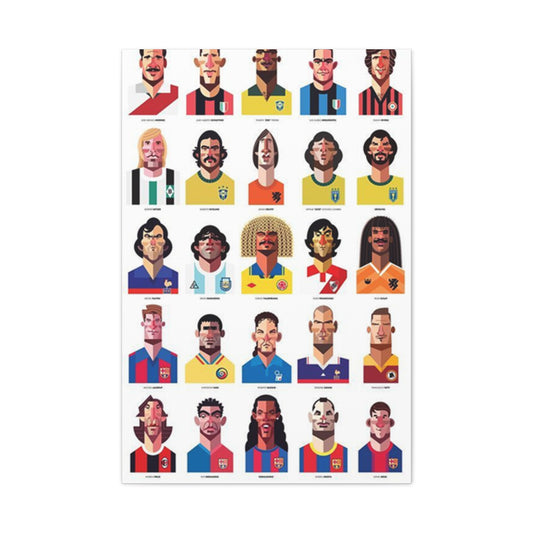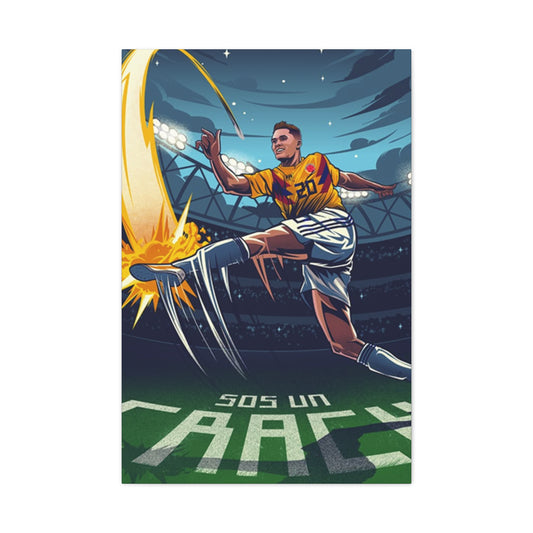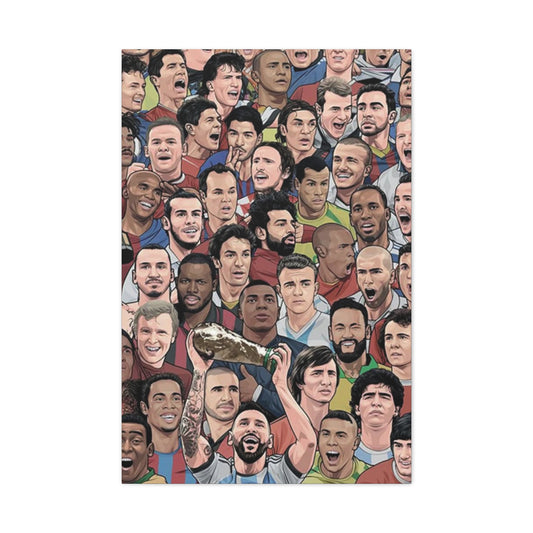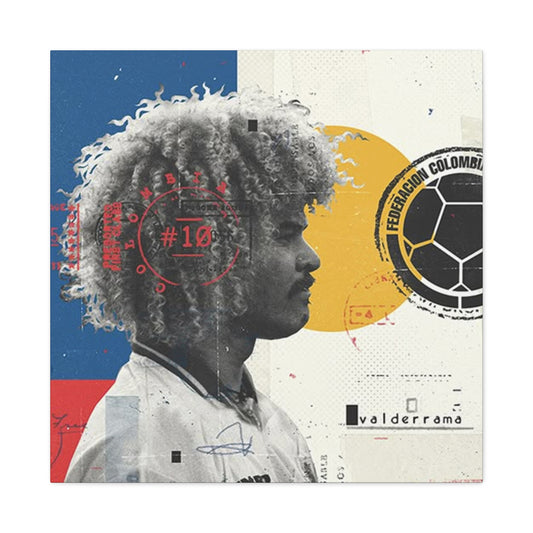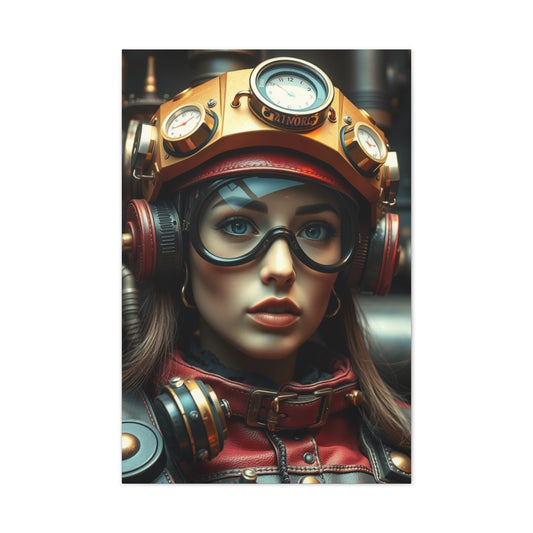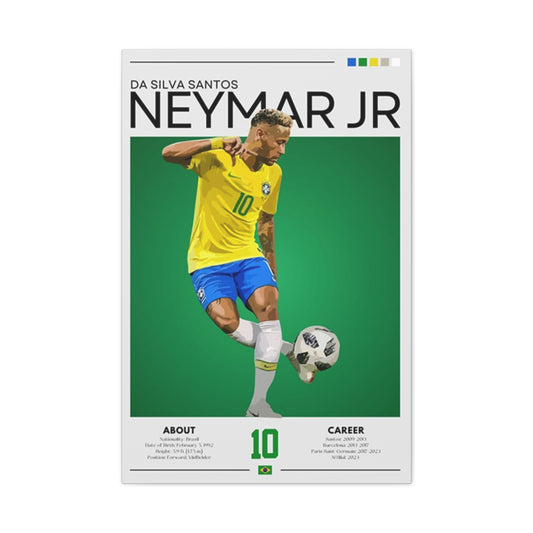Discovering the Pith Sketchbooks: A Personal Evolution in Art
In the midst of the challenging and uncertain days of 2021, when the pandemic brought about a sense of isolation and contemplation, I found myself increasingly drawn into the world of sketching. The pandemic led to an unexpected shift in my creative process, with time becoming an open canvas for exploration. As I collaborated online with my friend Harriet, exchanging drawings inspired by various found imagery, and participated in virtual life drawing sessions, my need for a sketchbook that could complement my evolving artistic style grew stronger.
I was already a regular sketchbook user, but I was in search of something that felt more attuned to my creative journey, something not just functional but aligned with my values. Then, one day, Harriet shared her recent discovery with me: Pith Sketchbooks. I remember the first time I saw it; the sleek design and the promise of environmental sustainability immediately caught my attention. It didn’t take much for me to be convinced. The idea of a sketchbook that could handle various media, from pencils to watercolors, while remaining environmentally conscious, seemed like the perfect match for my artistic needs.
What truly set Pith apart for me was the brand's commitment to sustainability. In a time when conscious consumerism was at the forefront of my mind, knowing that the materials used to craft these sketchbooks were responsibly sourced resonated deeply with my personal values. The promise of eco-friendly practices, combined with high-quality craftsmanship, felt like a rare and beautiful union. As someone who regularly used sketchbooks, I often found myself reflecting on the impact of my consumption, particularly the amount of paper and materials involved in creating my work. Pith’s dedication to reducing its ecological footprint made it a brand I felt proud to support.
One of the first things that caught my eye was the packaging. It wasn’t just simple; it was thoughtful and meticulously hand-finished. The packaging included detailed information about the origins of every material used in the sketchbook’s creation, and even more impressively, the name of the artisan who bound each sketchbook by hand in Northumberland. This attention to detail wasn’t just for show; it spoke volumes about the care and dedication that went into the creation of every single sketchbook. It was this personal touch, paired with their ethical approach to production, that truly elevated Pith Sketchbooks from being just another brand to becoming a meaningful choice in my artistic practice.
The Craftsmanship That Enhances Creativity
One of the standout features of Pith Sketchbooks is their craftsmanship. As an artist who frequently works across different media, I needed a sketchbook that would not only accommodate my creative process but also enhance it. Pith’s open binding design became a game-changer for me. The open spine allows the sketchbook to lie completely flat, a crucial feature for someone like me who often works on double-page spreads. In the past, I would frequently struggle with sketchbooks that didn’t stay open, leading to interruptions in my creative flow. But the lay-flat design of the Pith Sketchbook eliminated this issue completely, allowing me to create expansive, uninterrupted works that felt fluid and cohesive.
This simple yet highly effective design made a significant impact on how I approached my sketches and illustrations. It opened up the full width of the pages, enabling me to stretch my ideas across two pages without the concern of the gutter disrupting my compositions. The result was a more seamless creative process, where I could experiment freely without worrying about the technical limitations of my sketchbook. Whether I was exploring detailed compositions or making quick, bold sketches, the Pith Sketchbook supported my every move.
Equally important was the sturdiness of the cover. Whether I was working in the comfort of my studio or sketching outdoors, I appreciated the solid backing the hardback cover provided. It offered me the support I needed while sketching, preventing my hand from wobbling or losing stability. The durable cover, along with the addition of a bulldog clip, meant I could carry my sketchbook around without worrying about it getting damaged. Its portability became an asset in my creative routine, whether I was working on large pieces in the studio or taking my sketchbook out on nature walks to capture ideas.
What I appreciated further was the versatility in size options that Pith offered. The variety of available sizes allowed me to select a sketchbook based on my current project’s needs. Whether I needed something compact for quick sketches or a larger, more expansive sketchbook for detailed works, Pith provided a perfect solution. This adaptability was especially helpful as my creative process was constantly evolving, and I often needed a range of formats to suit my changing style.
The Pith Paper: Durable, Textured, and Ready for Anything
When it comes to sketchbooks, the paper quality is paramount. Over time, I’ve learned that no matter how well-crafted a sketchbook may be, if the paper doesn’t perform, it won’t serve its purpose. This was another area where Pith Sketchbooks excelled. The paper used in Pith’s sketchbooks is 200 gsm, which strikes a perfect balance between weight and flexibility. The texture is smooth but with just enough texture to handle a variety of mediawhether I was using dry materials like pencils and charcoal, or wetter mediums like watercolors and inks.
I was particularly impressed by the way the paper held up under different techniques. I tend to experiment with layering materials, pushing the limits of the paper to see how far it can go. The Pith paper rose to the challenge admirably. It provided enough strength to handle multiple layers of dry media without buckling or tearing. And when I used wet materials, the paper absorbed the liquid with ease, preventing any unwanted warping or bleeding. There was a confidence that came with working in the Pith Sketchbook, knowing that the paper would support my creative process, no matter the medium I chose to use.
Despite my efforts to test its durability, the paper revealed its limits over time. As I pushed it with more demanding techniques, I could see slight signs of wear, especially with heavier water applications. However, this only deepened my appreciation for the paper's capacity to retain its integrity while bearing the weight of layered materials. Rather than detracting from my experience, these subtle signs of wear became a testament to the quality and endurance of the materials. It made me feel connected to the sketchbook, knowing that it had truly supported my creative journey through every stroke and layer.
The Impact of Physical Features on Creative Freedom: Exploring the Pith Sketchbook
As an illustrator, the physical characteristics of a sketchbook can significantly influence the creative process, and my experience with the Pith Sketchbook made me realize just how crucial these details are. What initially seemed like a small featureits open bindingturned out to be a game-changer for my workflow. The design of the binding allows the sketchbook to lie perfectly flat when open, which is a rarity in many traditional sketchbooks. For someone who frequently works on expansive compositions, this simple yet important feature provided a new level of freedom. The ability to have the pages spread flat meant that I could work across double-page spreads without the typical struggle of dealing with an intrusive gutter in the center. Instead of limiting the flow of my artwork, the seamless connection between the pages made it feel like I had one continuous canvas to fill.
For an illustrator like myself, who often works on large-scale illustrations, this flat-binding design offered a sense of continuity and cohesiveness between the two pages. The absence of a gutter allowed me to use the entire spread, which significantly enhanced my ability to create more expansive, fluid compositions that could easily flow across the pages without interruption. This freedom not only helped me explore creative ideas more fully but also gave me the space to experiment without limitations, a quality that most traditional sketchbooks fail to provide.
Additionally, I came to appreciate the hardback cover, which offered unmatched sturdiness and support. When I’m working outdoorswhether it’s at the park, on a beach, or in a bustling coffee the ability to carry a sketchbook that can stand up to the elements while still providing the kind of support I need for my drawings is invaluable. I often find myself sketching in less-than-ideal conditions where a traditional drawing board isn’t available, but with the Pith Sketchbook, the firm cover became my portable drawing board. Whether I was sitting on a park bench or perched on a rock at the beach, I could easily prop up the sketchbook on my lap, lean it against a tree, or even hold it with one hand while I worked with the other.
This sense of portability combined with the reliability of a solid surface for drawing made the Pith Sketchbook a constant companion, even on my most impromptu artistic excursions. The durable hardback cover ensured that I could take the sketchbook anywhere without worrying about the pages being damaged or compromised by environmental factors. Its compact and sturdy design allowed me to be fully engaged in my creative process, regardless of the setting.
Paper Quality and Versatility: A Foundation for Mixed Media Masterpieces
The true test of any sketchbook, however, lies in how well it handles different media. As an artist who frequently works with a wide range of materialsfrom watercolors and pastels to pencils and the Pith Sketchbook exceeded my expectations. I often mix various media on the same page, layering different textures and techniques to create multidimensional works of art. Whether I’m experimenting with soft pastels, applying vibrant washes of watercolor, or using heavier materials like oil-based pencils, the Pith Sketchbook’s paper consistently provided the support and texture I needed.
The 200 gsm off-white paper has a beautiful, light to medium tooth that’s perfect for a variety of drawing and painting techniques. Its balanced texture ensured that my materials adhered smoothly without feeling too gritty or too slick. With watercolors, I could achieve delicate washes that didn’t result in excessive buckling or warping, a common issue with many other sketchbooks that don’t offer a strong enough paper for wet applications. I could layer color on top of each other without worrying about the paper compromising under the weight of the water or the pigment.
One of the things I found most remarkable about the paper was its ability to absorb water. As someone who regularly uses watercolors, I often rely on the paper to handle light water applications. I have experienced issues with other sketchbooks where excessive water could cause the paper to distort or even tear, but with the Pith Sketchbook, the paper handled moisture with remarkable grace. The watercolor pigments settled beautifully into the textured surface, and the paper captured the granulating nature of the paints, enhancing the natural flow of color without being overwhelmed by it. This ability to embrace both the fluidity of watercolor and the nuances of other media allowed me to explore a wide range of artistic techniques without worrying about the limitations of the sketchbook.
Even when using heavier materials such as pastels or oil-based pencils, the paper held up wonderfully. I could apply soft pastel layers to create vibrant, smudgy effects without the paper tearing or losing its integrity. This versatility made the Pith Sketchbook an ideal choice for my experimental mixed-media works, allowing me to confidently use a variety of materials on each page without the fear of ruining the paper or compromising the quality of the final artwork.
Durability and Response: Handling Heavy Pressure and Layering Techniques
As an illustrator, I also require a sketchbook that can handle a range of drawing techniques, from light sketches to intense, layered compositions. The Pith Sketchbook’s paper was particularly responsive when it came to handling graphite and other drawing media. Whether I was gently sketching out an idea or layering multiple layers of graphite to create depth and shading, the paper maintained its quality without buckling under pressure. While I occasionally noticed slight indentations from applying heavy pressure with my pencils, this is a common characteristic of any high-weight paper and didn’t detract from the overall performance of the sketchbook. In fact, it was reassuring to see how the paper responded to the weight of my hand, offering a smooth drawing experience while still allowing for the creation of rich, detailed artwork.
The paper’s balanced texture was key to this versatility. It wasn’t overly slick, which would have made it challenging to work with graphite or colored pencils, nor was it excessively rough, which could have interfered with the smoothness of the drawing process. Instead, it struck the perfect balance, allowing my pencils to glide smoothly across the surface while still providing enough texture for subtle shading and intricate details. The response to light and heavy pressure was consistent throughout my time with the sketchbook, providing me with the flexibility to adapt my drawing techniques as needed.
Overall, the Pith Sketchbook provided me with a reliable and durable platform for both drawing and painting. Its sturdy construction and versatile paper made it an essential tool for any illustrator or artist looking to explore different techniques and media. Whether I was working on quick sketches or more detailed, layered compositions, the Pith Sketchbook never let me down. Its thoughtful designright down to the flat-binding, hardback cover, and expertly crafted paperensured that my creative journey was never limited by the medium I used or the environment I found myself in.
Testing Durability: Pushing the Pith Sketchbook to Its Limits
After spending considerable time exploring the Pith Sketchbook and enjoying its versatility for light sketching and drawing, I decided to push its boundaries and truly test its durability. As an artist who enjoys experimenting with a wide range of materials, I wanted to see how the sketchbook would handle more rigorous applications. While sketchbooks are typically designed for less demanding tasks, I have always approached mine with a mindset of creative exploration. Over the years, I've used sketchbooks as a canvas for various mediums, from watercolor washes to thick layers of pastels, and even mixed media. With that in mind, it was time to see how the Pith Sketchbook would fare under extreme conditions and heavier materials that most artists would typically reserve for canvas or other specialized papers.
The idea of testing this sketchbook with unconventional materials like soft pastels, acrylics, and even more fluid paints intrigued me. As an artist, I constantly seek to break free from traditional boundaries, and I was excited to put this sketchbook through some rigorous trials. Although sketchbooks are primarily meant for pencil and ink work, I wanted to see how well the Pith Sketchbook could handle heavy applications and different artistic techniques. My goal was not just to test the sketchbook’s physical strength, but also its potential to serve as a true mixed-media surface.
Soft Pastels: A Smooth Application and Impressive Performance
One of the first tests I conducted was using soft pastels. These delicate sticks of vibrant pigment are known for their ability to produce rich, vivid colors. Blending pastels with fingers can create intense, layered color effects, but it also puts pressure on the paper surface. For this test, I used a generous amount of pastel, layering thick pigments and using my fingers to blend them smoothly into the paper. This application typically results in some serious wear and tear on the surface of a sketchbook, especially when you’re blending and layering to achieve subtle transitions in tone. I was pleasantly surprised by how the Pith Sketchbook handled the load.
The paper held up admirably under the pressure. The slight texture of the paper allowed the pastels to adhere well, and I was able to achieve rich blending without excessive pilling, which can sometimes occur when using soft pastels on lower-quality sketchbook paper. The paper absorbed the pigment well, and I was able to fix the colors in place using a light spray of fixative. Although the Pith Sketchbook isn’t marketed as a pastel-specific surface, its performance in this test was impressive. It didn’t feel like working with a professional pastel paper, but for artists who may not always have a dedicated pastel surface on hand, the Pith Sketchbook proved itself as a versatile alternative for pastel work.
This test highlighted the sketchbook’s ability to support delicate techniques and create beautiful textures without sacrificing its structural integrity. For any artist looking to use pastels in a mixed-media setting, the Pith Sketchbook provides a reliable surface that offers room for creativity without the risk of ruining the page. The pastel pigments adhered well, and the pages didn’t show signs of major wear or buckling, making it clear that this sketchbook can handle a fair amount of pigment layering and blending.
Acrylic Paints: A Different Story with Fluid Media
While the Pith Sketchbook showed great potential with soft pastels, the real test came when I decided to dive into the world of acrylic paintsspecifically with liquid acrylics and acrylic markers. Acrylic paints, particularly those that are more fluid in nature, can be very demanding on paper. Their fluidity means they often soak into the paper quickly, and the intense concentration of pigment can cause bleeding or buckling. I decided to experiment with two different types of acrylic products: Liquitex Professional Acrylic Markers and Golden High Flow Acrylic Paint. These paints are known for their fluidity, intensity, and ability to provide smooth, consistent coverage.
When I first applied the Golden High Flow Acrylic directly to the paper without any preparatory layers, I saw immediate results. The paint bled through the paper, which wasn’t unexpected. Given the thinness of the Pith Sketchbook paper and the fluid nature of these paints, it was clear that this combination would test the paper’s limits. The pages underneath were affected by the bleed-through, which created an issue if you intended to use the sketchbook for multiple layers of fluid paint. Furthermore, the page began to buckle under the intensity of the liquid acrylic, making it clear that the Pith Sketchbook isn’t meant to withstand heavy, undiluted acrylic applications.
That being said, the integrity of the paper itself remained intact, despite the challenges posed by the fluid acrylic. While the paint did cause significant bleed-through and some warping, the paper didn’t tear or disintegrate, which is an important point in testing durability. For an artist seeking to push materials to the limit, the Pith Sketchbook certainly showed its resilience in this test, even if it wasn’t able to fully withstand the demands of heavy acrylics.
Acrylic Gouache: A More Favorable Experience
Although the Pith Sketchbook had its limitations when dealing with fluid acrylics, I had more success with acrylic gouache. This is a medium that lies somewhere between traditional gouache and acrylic paints. Acrylic gouache tends to be thicker and less fluid than traditional acrylic paints, and it doesn’t exhibit the same level of bleeding or excessive soaking into paper. I decided to test both Holbein and Turner Japanesque Acrylic Gouache to see how well the Pith Sketchbook would handle this somewhat more controlled medium.
To my surprise, the results were much more favorable with acrylic gouache. Both brands performed excellently on the Pith Sketchbook’s paper, with no significant issues related to buckling or bleed-through. The slightly textured surface of the paper provided a stable foundation for these acrylic gouaches, allowing me to apply multiple layers without the fear of the paper degrading or losing its integrity. Unlike the fluid acrylics, which caused visible damage to the pages, acrylic gouache was much more forgiving, allowing for rich, vibrant colors and smooth coverage.
The surface of the Pith Sketchbook seemed to balance the viscosity of acrylic gouache perfectly. It absorbed the paint well and allowed me to layer without the usual problems associated with more fluid media. This was a great revelation for anyone looking to incorporate acrylic gouache into their mixed-media practice. The Pith Sketchbook offers a durable, versatile surface that can handle the demands of such materials while still providing an enjoyable artistic experience. For those working with acrylic gouache as a primary medium, this sketchbook is a solid choice that will allow for experimentation without compromising on quality.
The Balance of Durability and Limitations in the Pith Sketchbook
When testing the Pith Sketchbook, I wanted to push its capabilities to see how it would hold up against a variety of art materials, particularly markers. As a long-time artist who loves to experiment, I reached for a selection of my favorite tools, including both water-soluble and alcohol-based markers. These markers are known for their vibrant colors and unique blending abilities, and I was eager to see how the sketchbook would handle them. What I found during this part of my testing was rather impressive, showcasing a level of durability and performance that made the Pith Sketchbook stand out in the crowded world of art supplies.
One of the first things I noticed was how well the Pith Sketchbook absorbed ink. Using my Tombow Dual Tip Blendable Brush Pens, Talens Ecoline Brush Pens, and Faber Castell Goldfaber Markers, the paper performed admirably under each medium. The inks flowed smoothly, allowing for seamless blending and layering. Unlike other sketchbooks I’ve worked with in the past, the Pith Sketchbook showed no signs of pilling or texture degradation, which is a common issue when using wet media. The recent updates to the paper stock have certainly made a difference in terms of performance with liquid-based materials. This improvement is particularly noticeable when you layer colors or apply heavier amounts of ink, which can easily cause other sketchbooks to deteriorate.
Another aspect that deserves mention is how easily I was able to achieve smooth transitions when blending the markers. Whether it was the rich pigments of the Talens Ecoline or the versatility of the Tombow Brush Pens, I found myself able to layer different tones without the paper showing any significant wear. This was especially crucial during the blending process, where achieving smooth gradients is often difficult on paper that is too absorbent or too slick. The Pith Sketchbook, however, allowed for extended work without compromising the integrity of the surface.
However, as much as I appreciated the performance with lighter applications, I did want to test the limits of the sketchbook. As an artist, I often push the boundaries of materials to see how far I can go before encountering flaws or limitations. In this case, I began layering the markers one on top of the other in quick succession, applying more and more ink to see how the paper would respond. While it fared well initially, I started noticing subtle signs of wear after the fourth layer. The paper began to show a slight distortion and roughness where the markers had been applied multiple times in rapid succession. This is, of course, a limitation that most sketchbooks would face when subjected to such heavy applications of liquid.
Despite this minor drawback, it's important to note that the Pith Sketchbook held up remarkably well under these extreme conditions. Most other sketchbooks would have buckled or degraded much earlier, but the Pith Sketchbook managed to maintain a reasonable level of integrity even as I pushed it beyond typical usage. This is where the fine line between durability and limitations becomes apparent. While it’s clear that the sketchbook isn’t designed for extreme liquid applications as heavy washes of acrylic paint or excessive layers of wet markersits performance under normal artistic conditions is outstanding.
For artists who often work with multiple layers of markers, colored pencils, or even light washes of watercolor, the Pith Sketchbook provides excellent versatility. It’s designed with the artist’s needs in mind, allowing for a wide range of media applications without compromising the quality of the artwork. It offers a balanced approach between durability and flexibility, making it a great tool for everyday use, whether you're sketching, illustrating, or exploring mixed media techniques.
Durability and Versatility in Daily Use
When it comes to choosing the right sketchbook, durability is a key consideration for many artists. As someone who uses sketchbooks regularly, I understand the importance of having a surface that can handle a wide variety of media. The Pith Sketchbook stands out in this regard, offering a robust paper stock that can take a beating without showing significant signs of wear. From my experience, it holds up remarkably well under the pressure of repeated use, whether you’re sketching lightly with graphite or applying more intensive layers of ink and paint. What I truly appreciate about the Pith Sketchbook is its ability to retain the texture and structure of the paper even after extended use. Some sketchbooks tend to lose their integrity after just a few applications of wet media, but the Pith Sketchbook seems to be designed with durability in mind. It’s the kind of sketchbook you can confidently reach for, knowing that it can handle your artistic process from start to finish without buckling or compromising the quality of your work.
In addition to its durability, the versatility of the Pith Sketchbook makes it an ideal choice for a wide range of artistic techniques. Whether you’re creating quick studies with a pencil or embarking on more detailed and layered compositions with watercolor or acrylic, this sketchbook rises to the occasion. It offers a surface that adapts seamlessly to a variety of mediums, providing consistent performance no matter how complex or simple the project. One of the things that sets it apart from other sketchbooks is its ability to support mixed media. Many sketchbooks struggle with the different demands of various art supplies, but the Pith Sketchbook keeps its structure intact no matter how many layers of paint, ink, or graphite you apply. Artists who enjoy experimenting with different materials will appreciate how well it supports each medium without compromising its integrity.
Another notable feature of the Pith Sketchbook is its eco-conscious design. Many artists are increasingly concerned with sustainability, and the Pith Sketchbook addresses this concern by using environmentally friendly materials in its production. This makes it an excellent choice for those who want to minimize their ecological footprint while still using a high-quality product. The manufacturing process is not only thoughtful but also aligns with the growing movement towards sustainability in the art supply industry. In a world where conscious consumption is becoming more important, the Pith Sketchbook offers an eco-friendly alternative without sacrificing the performance expected from premium sketchbooks. The care taken in selecting and using sustainable materials means you can feel good about every page you fill, knowing your creative process is aligned with responsible environmental practices.
For those who appreciate an eco-friendly approach without sacrificing performance, the Pith Sketchbook is an ideal choice. Whether you’re an established artist or someone just beginning to explore the world of mixed media, the Pith Sketchbook offers a dependable, sustainable surface that can handle the demands of your artistic practice. Its durability, versatility, and sustainability make it an outstanding option for any artist who seeks a sketchbook that supports their creative journey while being mindful of the planet.
Moreover, the tactile experience of working in the Pith Sketchbook enhances the artistic process in a way that cannot be understated. The slightly textured surface gives a unique feel when drawing or painting, providing just the right amount of resistance to create bold lines or smooth washes. Artists know that the interaction between their tools and the surface can influence the final result, and the Pith Sketchbook understands this relationship, providing a surface that invites experimentation while remaining forgiving for more delicate work. Over time, as you continue to use it, the pages become familiar and comforting, making it an essential part of your artistic routine.
It’s not just about the immediate appeal of a sketchbook but about how it sustains the artist’s process over time. The Pith Sketchbook’s resilience in the face of frequent use speaks to its quality craftsmanship, making it a tool that will continue to serve you through many creative ventures. From the first page to the last, it offers the stability and reliability that every artist desires, ensuring that your work will continue to shine, whether you’re capturing fleeting moments or embarking on more long-term projects. The combination of durability, versatility, and sustainability makes it a standout choice in a crowded market, providing artists with a trustworthy companion for their creative expression.
The Fine Line Between Performance and Limitations
While I am incredibly impressed with the Pith Sketchbook’s ability to handle a wide variety of media, I must emphasize that no sketchbook is without its limitations. The Pith Sketchbook shines when it comes to light to medium applications of wet media, such as markers, colored pencils, and light washes of watercolor. However, as I mentioned earlier, the paper begins to show signs of wear when subjected to extreme conditions, such as multiple layers of heavy ink or extensive acrylic applications. For most artists, this won’t be an issue, as the sketchbook excels under typical conditions that involve lighter layers and more controlled media applications.
It’s essential for artists to recognize the limits of their tools, and the Pith Sketchbook is no exception. While it can withstand regular use and moderate experimentation, it’s not designed to endure the most extreme artistic applications. This doesn’t detract from its overall value, however, as the sketchbook provides exceptional performance for the majority of artistic needs. If you're someone who regularly works with heavy acrylic washes or uses a lot of water-based media in rapid succession, you might find the Pith Sketchbook less suited to your style. However, for those who prioritize versatility, durability, and sustainability, this sketchbook is an excellent choice.
In conclusion, the Pith Sketchbook is an outstanding tool for artists who want a reliable, eco-conscious option for their creative endeavors. While it’s important to acknowledge its limitations, the overall performance is exceptional, making it a valuable addition to any artist’s toolkit. With its sturdy paper, eco-friendly manufacturing process, and ability to withstand daily creative use, the Pith Sketchbook delivers on its promises and proves to be a top-tier choice for those seeking a versatile and durable sketchbook.










